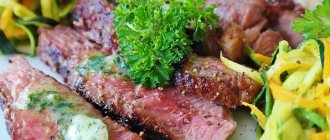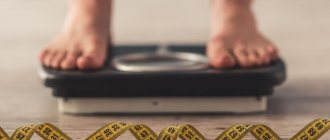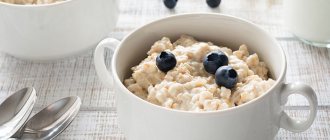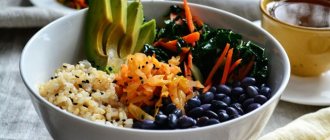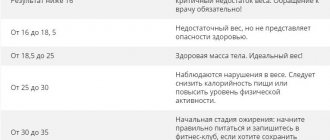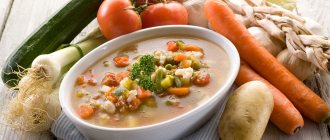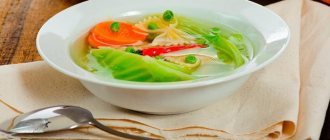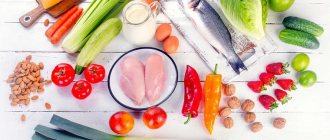Incredible! On a fat diet, you can easily eat pancakes, roast meat, and other delicious dishes and lose weight! Without hunger and strict portion size restrictions! Find out more about this super diet and get the menu!
Author: Kristina Lobanovskaya, doctor, practicing nutritionist Article updated: 11/09/2020
With a healthy lifestyle or while following most weight loss diets, the intake of fatty foods is limited as much as possible. This is due to the fact that reducing the amount of fat in the diet significantly reduces its daily calorie content and has a positive effect on health. Most nutritionists believe that the first step is to minimize the consumption of fatty meats, high-fat dairy products and other sources of animal fats. And to ensure normal functioning of the body, it is enough to take a little healthy vegetable oils. Contrary to all these dogmas, there is a completely absurd at first glance so-called fat diet, which involves switching to eating the most fatty protein foods and an almost complete rejection of any carbohydrates - not only harmful simple ones, but also healthy complex ones.
The role of fats in the human body
Without fats, normal functioning of the body is impossible.
They are a source of energy that is found in cell membranes, intracellular formations, and nerve tissues. During the oxidation process, 1 g of fat is converted into 9 kcal of energy. Their effect on the body:
- memory, concentration, and brain activity improves;
- lipid protection is created that prevents the skin and mucous membranes from drying out;
- the immune system is strengthened, as the body is saturated with phospholipids and fat-soluble vitamins (K, A, E, D);
- bile is synthesized;
- prostaglandins and hormones are produced;
- the metabolism of proteins and carbohydrates accelerates;
- fatty acids are supplied.
Healthy and unhealthy fats
All fats are divided into saturated and unsaturated. The former have a high melting point.
Functions of fats in the human body.
Features of each type:
- Saturated - triglycerides with saturated fatty acids. They are characterized by a single carbon bond and are found in fermented milk products, red meat, exotic oils (palm, etc.). If consumed in moderation, they do not cause any harm; if consumed in excess, they contribute to the formation of cholesterol plaques.
- Unsaturated - triglycerides with unsaturated fatty acids. They consist of a double carbon bond and are found in plant oils and nuts. Are useful.
Separately, it is worth highlighting a type of saturated fat - trans fats. They are present in small quantities in natural meat and dairy products. But there are also industrial trans fats (artificially hydrogenated from unsaturated fats), which the World Health Organization recommends should be excluded from the diet.
Spenders are found in large quantities in margarine, semi-finished products, fast food, confectionery products with a long shelf life, etc.
Is a high-fat diet a paradigm shift or just another fashion trend?
24.05.2019 00:00
9855
There is a huge interest in diets that make weight loss relatively easy and effective. In recent years, evidence has begun to emerge in the scientific community that carbohydrates are more responsible for excess weight and the rise in obesity in modern society.
Author: Kalandia Marika Malkhazovna
REVIEW OF FOREIGN SCIENTIFIC PUBLICATIONS.
Part one
There is a huge interest in diets that make weight loss relatively easy and effective. In recent years, evidence has begun to emerge in the scientific community that carbohydrates are more responsible for excess weight and the rise of obesity in modern society than fats. Publications in recent years [1-5] and WHO recommendations from 2015 – Guideline: sugars intake for adults and children [3] have forced us to seriously reconsider the attitude towards carbohydrates and fats and their role in the occurrence of obesity and type 2 diabetes.
These recommendations include, in particular, reducing the consumption of simple carbohydrates - sugar and starch. Reflecting the new trend of “fat rehabilitation” are diets with a decrease in the amount of carbohydrates, which, accordingly, means a relatively high fat content.
The purpose of this review is to provide an understanding of the basic principles of a low-carbohydrate, high-fat diet: Low Carbohydrate High Fat (LCHF). The LCHF nutrition system was originally created for the correction of epilepsy. It is believed that ketosis, which inevitably occurs with this type of diet, helps suppress areas of increased seizure activity. However, as often happens, the new nutrition system had a “side effect”, which consisted of weight loss. Chance finds are not uncommon; This was the case with botulinum toxin, it was initially used to treat blepharospasm and relieve headaches, and then it was noticed that wrinkles began to smooth out in patients who were injected with botulinum toxin. A similar story happened with the keto diet; patients with epilepsy who adhered to it began to notice smooth weight loss!
What is the essence of LCHF nutrition? It is obvious that restricting one of the components in the diet, in particular carbohydrates, inevitably leads to an increase in the consumption of other nutrients; With the LCHF diet, the daily calorie content is compensated by the increased fat content.
The LCHF diet is conventionally divided into three levels: up to 100 g of carbohydrates per day, up to 50 and up to 20 g. For example, with a calorie diet of 1500 kcal in the first case, the daily amount of carbohydrates should not exceed 100 g, i.e. about 405 kcal, which is about 27% of calories. In the second case, 50 g of carbohydrates will amount to no more than 205 kcal, i.e. 14% of daily calories, and in the case of 20 g of carbohydrates - only 5%. Actually, a keto diet is a diet containing no more than 20-50 g of carbohydrates per day [5, 6].
The main source of energy for the cell, as is known, is glucose, which is formed during the breakdown of carbohydrates. The entry of glucose into the blood (postprandial glycemia) is always accompanied by the production of insulin. Inulin is a pancreatic hormone whose main purpose is to “feed” cells with glucose. When the cells are full, fat burning does not occur; there's simply no need for it. But using carbohydrates as the main source of nutrition has disadvantages: the release of insulin that accompanies glycemia stops fat burning. Moreover, the abuse of carbohydrates, in particular, carbohydrate “snacks” in order to dull hunger, leads to exactly the opposite effect; an increase in glucose is followed by a decrease, and hunger arises again. In the long term, spikes in glycemia and insulin can have serious consequences in the form of impaired glucose tolerance and prediabetes; Frequent and uncontrolled rises in insulin can lead to a decrease in tissue sensitivity to this hormone. And insulin resistance is the basis for the formation of metabolic syndrome with all the ensuing consequences.
What about limiting carbohydrate intake?
By limiting the intake of carbohydrates, the most accessible and “fast” fuel, the flow of glucose into the liver, muscles, and brain decreases, and, accordingly, glycogen reserves decrease. In such a situation, gluconeogenesis is activated in the body, but with a continuing lack of carbohydrate intake from the outside, it remains at a low level; the body switches to using fats as an alternative source of energy. Fatty acids are an “emergency energy generator” [7]. Under conditions of increased breakdown of fatty acids to meet the body's energy needs, some of them remain under-oxidized, and ketones are formed. Hence the name of one of the low-carb diet options - ketone or simply “keto”.
When carbohydrate intake is insufficient, insulin levels in the blood remain low, which reduces fat storage and promotes weight loss. But most importantly, low insulin levels help reduce the risk of insulin resistance and associated metabolic disorders.
Despite all the obvious validity of this method, its popularization requires time and systematic clinical research. Regarding the optimal duration of the LCHF diet, today there are no systematic studies lasting more than 2 years, so it is premature to talk about the widespread introduction of keto or LCHF into widespread practice.
Unfortunately, no long-term follow-up data have been accumulated on comparable groups receiving an LCHF diet or a diet low in fat and relatively high in carbohydrates; There are also no sufficiently adequate controlled randomized trials suitable for meta-analysis. Due to limited observational data, Dyson [8] does not recommend using the LCHF diet as a standard approach in all patients with type 2 diabetes.
Scientists also differ in their opinions regarding which factors are of paramount importance in weight loss—calorie restriction or the qualitative composition of nutrients.
What takes priority and makes a greater contribution to weight loss and reduction of metabolic risk in obese people - reducing caloric intake or the ratio of fat to carbohydrates consumed? Wyk [9] et al are of the opinion that reducing calorie intake is more important in relation to weight loss; a high-fat/low-carbohydrate LCHF diet does not have critical advantages over a diet with a regular carbohydrate content (132-162 g/day) in terms of normalizing blood glucose levels and influencing other metabolic factors. In addition, maintaining a low-carb diet for an extended period of time (more than 6 months) appears to be very difficult, the authors suggest.
The most recent scientific publications provide encouraging results and attempt to optimize the use of the LCHF diet and differentiate situations in which the clinical benefits of the LCHF diet are obvious. Thus, Hjorth MF et al [10] conducted three large randomized studies including obese individuals. The main criteria for assessing the effectiveness and predictors of successful weight loss and maintenance were the level of fasting glucose and insulin in the blood plasma. It was found that in individuals with prediabetes (impaired fasting glucose) and type 2 diabetes, greater weight loss and subsequent weight maintenance occurred on a low-carbohydrate, high-fat diet compared with a low-fat/high-carbohydrate diet [10]. In contrast, in individuals with preserved insulin sensitivity and normoglycemia, better results were obtained on a low-fat diet. Similar data was published by Wan also in 2021 that a relatively high-carbohydrate diet is more effective in healthy obese individuals (metabolically healthy obesity). Based on these data, Astrup A and Hjorth MF [11] concluded that the main determinants in the choice of dietary therapy are insulin sensitivity and fasting glycemia.
So, is it possible to talk about a paradigm shift? As with any new method, many questions arise about LCHF. How long can you stay on LCHF and, in particular, the keto diet? Who is it shown to? Are there any downsides to this power system? And are the advantages of a LCHF diet over a low-fat diet so obvious? How to avoid the reduction in dietary fiber intake that is inevitable on a LCHF diet and the associated problems with bowel movements and changes in the microbiota?
We will cover these and other questions, whenever possible, in subsequent publications.
Literature
- Hauner H., Bechthold A., Boeing H. et al. Evidence-based guideline of the German Nutrition Society: carbohydrate intake and prevention of nutrition-related diseases // Ann. Nutr. Metab. 2012. V. 60. P. 1–58.
- Nutrition SACo (2015) Carbohydrates and health. Accessed May 2017
- World Health Organization (2015) Guideline: sugars intake for adults and children. World Health Organization. Accessed May 2017
- World Health Organization (2015) Global status report on noncommunicable diseases, 2014: achieving the nine global noncommunicable diseases targets; a shared responsibility. World Health Organization, Geneva.
- Westman EC, Feinman RD, Mavropoulos JC et al. Low-carbohydrate nutrition and metabolism // Am. J Clin Nutr. 2007. V. 86. P. 276–284.
- VanItallie TB, Nufert TH Ketones: metabolism's ugly duckling // Nutr. Rev. 2003. 61. P. 327–341.
- Hall K. A review of the carbohydrate–insulin model of obesityAccessed May 2017
- Dyson P. Low carbohydrate diets and type 2 diabetes: what is the latest evidence? // Diabetes Therapy. 2015. 6. P. 411–424.
- Wyk H, Davis R, Davies J. A critical review of low-carbohydrate diets in people with type 2 diabetes. // Diabet Med. 2021. V. 33. P. 148–157.
- Hjorth MF, Ritz C, Blaak EE et al. Pretreatment fasting plasma glucose and insulin modify dietary weight loss success: results from 3 randomized clinical trials // Am. J. Clin. Nutr. 2017. V. 106. P. 499–505.
- Astrup A, Hjorth MF Low-fat or low carb for weight loss? It depends on your glucose metabolism. // EBioMedicine. 2021. P. 22.
The essence of the fat and protein-fat diet
Carbohydrates are the source of energy, but if there are not enough of them in the body, fats begin to break down.
Nutrition for weight loss is based on the consumption of fats of animal and plant origin, protein compounds and a small number of carbohydrates. This diet saturates the body with calories, so a person does not feel hungry for a long time.
There are several diet options offered by different nutritionists, but their essence is the same:
- the diet should consist mainly of fats of plant and animal origin, proteins;
- products containing starch and sugar are completely excluded;
- no need to starve, as calories are not counted;
- It is undesirable to eat fruits, berries, vegetables (permissible in minimal quantities);
- you can’t have snacks;
- after eating, a 20-minute rest is necessary;
- physical activity is permissible only 2 hours 30 minutes after eating.
During the diet, it is undesirable to eat fruits and berries.
With such a diet, energy is generated not from carbohydrate compounds, but from fatty compounds, and therefore body volumes decrease.
Product composition
Ready-made meals should consist of 1 part protein, 0.7-0.8 carbohydrates and 2-3.5 fat (mostly of vegetable origin).
How much fat to eat
The average daily intake of unsaturated fats is 20% of the total diet, saturated fats - 10%. For a protein-fat diet, you can use individual calculations of the consumption of high-calorie foods based on body weight. The average human need for fat is 1-2 g per 1 kg of body weight.
Since the Kwasniewski method allows you to consume fatty foods in any quantity, you can adhere to the upper limit of the normal human requirement (NHR) for fat - 2 g. To make individual calculations, you need to multiply the NHR by body weight.
For example, 60x2=120 g (this is how much fat you can eat per day). But the nutritionist claims that caloric content does not matter, so there is no point in making calculations.
The effect of diet on the body
A fatty diet involves reducing body weight by 5-6 kg over 30 days.
The result lasts a long time. With this diet you can get rid of 5-6 kg in a month. Due to the absence of carbohydrates, protein-fat nutrition has the following effect on the body:
- there is no insulin release, so glucose levels return to normal;
- there is no increased load on the pancreas;
- food addiction goes away;
- vigor increases;
- the nervous system is restored - irritability and depression disappear;
- new cell membranes are regenerated and formed;
- tissues are saturated with minerals, vitamins and other microelements.
Fat diet: basic rules
The fat diet has been developed over 30 years. This is exactly how much it took a Polish general practitioner to study the effect of nutrients on extra pounds. Dr. Kwasniewski successfully proved that in order to gain and lose weight, high-calorie foods should predominate on the menu. These include proteins of animal origin.
The practicing doctor not only invented the original nutritional system, but also used it to treat patients. Thus, thanks to a change in diet in favor of fats, the functions of the cardiovascular and excretory systems were restored. Previously, it was believed that such pathologies, on the contrary, require the exclusion of high-calorie foods. But Kwasniewski’s fat diet refuted the generally accepted dogmas of dietetics, allowing overweight people to lose weight and thin people to gain weight.
General principles:
- the effect of weight reduction occurs due to subcutaneous fat, the intramuscular lipid layer is preserved, allowing you to save energy reserves;
- in the ideal formula for the balance of nutrients in a fatty diet, the prerogative is, of course, fats, followed by parts of proteins and carbohydrates - 3: 1: 0.8;
- The diet is based on foods that provide energy and are easily digestible by the body - proteins and fats of animal origin;
- considers cereals, fruits, and vegetables to be useless for the normal functioning of the body; the content of indigestible fiber and moisture leads to problems with absorption, and therefore to the appearance of extra pounds;
- instead of water-rich vegetables and fruits, the doctor recommends establishing a drinking regime; according to a fatty diet, it is healthier to drink a glass of clean water than to eat cucumber salad;
- the transition lasts about a week, the first days one meal is replaced with high-calorie dishes, then two, and then carbohydrate nutrients are completely replaced;
- A comfortable environment is also important when following a fatty diet; while eating you need to be as relaxed as possible, slowly chew your food, then a half-hour rest follows, and you can start active physical activity only after 2 hours;
- By following Dr. Kwasniewski’s diet, there is no need to adhere to the principles of fractional nutrition, there are no portion restrictions, but you cannot eat more than 250 grams of high-calorie animal products;
- Only 2 meals are recommended - breakfast, lunch, it is better to refuse dinner or reduce the volume;
- the deficiency of minerals and vitamins is replenished by animal by-products - liver, kidneys, lungs, heart;
- There are no snacks; usual breaks can be replaced by drinking tea or drinking regular clean water.
A fatty diet requires monitoring of health indicators. If you eat a diet rich in proteins and fats of animal origin, you need to take a blood test once a week.
Authorized Products
The main food for a fatty diet is lard, meat, egg dishes (up to 8 pieces), dairy and fermented milk products (cream, sour cream, butter, processed and hard cheeses).
In addition, your diet should include:
- offal - liver, lungs, ventricles;
- fatty fish, seafood;
- soybeans, peas, beans;
- cottage cheese, fermented baked milk, kefir, homemade milk;
- nuts and seeds (chia, pumpkin, sunflower, flax);
- cold pressed vegetable oil;
- avocado;
- natural peanut butter, but no added sugar.
Allowed foods on the diet.
Fully or partially limited products
It is undesirable to consume large quantities of fiber, which is found in hard fruits and vegetables, as well as carbohydrates (albeit complex) from cereals, bran, flour, etc.
It is permissible to eat in limited quantities per day:
- potatoes (1-2 pcs.);
- fruits/vegetables - up to 3 pcs.;
- boiled pasta/spaghetti (up to 3 tbsp.);
- bread - 1 slice;
- porridge - 1 tbsp. l.
Completely prohibited products:
- alcoholic and sweet carbonated drinks;
- cakes, pastries, sugar, sweets, ice cream, cookies and other confectionery products;
- juices with sugar;
- sweetened yoghurts;
- carrots, beets, corn;
- bakery products;
- store-bought (factory) semi-finished products: dumplings, pancakes, etc.;
- purchased canned fish and meat;
- sausages;
- chips and similar unhealthy snacks;
- fruits: bananas, dates, grapes, figs, mangoes.
It is acceptable to eat dark chocolate and dried fruits in limited quantities.
Alcohol is prohibited on the diet.
Sample diet for a week
In order to understand how you will have to eat over a long period of time, you can familiarize yourself with the approximate weekly menu, which includes three meals a day - morning, afternoon and evening.
Monday:
- fried lard or bacon with eggs, unsweetened tea with a sandwich of bread and butter;
- pork chop with boiled potatoes and any fresh vegetable;
- syrniki.
Tuesday:
- homemade sausage with bread and sour cream;
- fried potatoes with eggs, pickled cucumber/tomato, coffee with cream;
- tea with milk, cottage cheese casserole, topped with rich sour cream.
Wednesday:
- tea with cream, curd and egg dish with sour cream;
- pork bone soup, omelet or scrambled eggs, toast;
- 3 boiled eggs with kefir.
Thursday:
- scrambled eggs with bacon, bread and butter, tea with milk;
- baked fatty fish, tomato, mushrooms, fermented baked milk;
- sour cream, cottage cheese, eggs.
Friday:
- meat pancakes, homemade milk;
- pasta with bacon or lard, coffee with cream;
- squid salad with egg and sour cream, tea.
Saturday:
- cottage cheese casserole, coffee with cream;
- beef liver cooked in cream, cucumber, bread and butter;
- scrambled eggs and bacon, 150 ml sour cream.
Sunday:
- boiled eggs with a piece of baked pork, kefir;
- fried fish with potatoes or porridge, sour cream;
- roast with meat and mushrooms, tea with milk.
Sample menu for 3 days.
You can choose your own dishes for each new day.
Sample menu
The effectiveness of fat loss, like any other weight loss method, significantly depends on a well-designed diet. Jan Kwasniewski offers a sample menu for the week, which helps you understand what and how much you need to eat for effective weight loss.
Day 1:
- breakfast - eggs fried with pieces of lard (bacon, brisket), 1 slice of bread with butter, tea or coffee with cream;
- lunch - pork chops in leison and breadcrumbs, 100 g of boiled potatoes, 1 small cucumber;
- dinner - cottage cheese pancakes with sour cream.
Day 2:
- breakfast – toasted Bavarian sausages, 1 slice of bread, sour cream;
- lunch – 100 g of fried potatoes with eggs, 1 pickled cucumber, tea with cream;
- dinner - curd sheets with sour cream, tea with cream.
Day 3:
- breakfast - egg and cottage cheese casserole with sour cream, tea or coffee with cream;
- lunch – potatoes stewed with pork, 1 slice of bread with peanut butter, tea with cream;
- dinner – boiled eggs, fermented baked milk.
Day 4:
- breakfast - an omelet with pieces of bacon, 1 slice of bread with butter, tea or coffee with cream;
- lunch – baked trout with mushrooms, 1 tomato, fermented baked milk;
- dinner - egg and cottage cheese casserole with butter and sour cream.
Day 5:
- breakfast - pancakes with meat, milk;
- lunch - pasta with fried bacon, tea without sugar with cream, a slice of bread;
- dinner - fermented baked milk, cottage cheese with sour cream.
Day 6:
- breakfast – cottage cheese with sour cream, coffee with cream;
- lunch – beef liver stewed in cream, 1 cucumber, 1 slice of bread with butter;
- dinner – fried eggs with bacon, sour cream.
Day 7:
- breakfast – fried sausage with eggs, 1 slice of bread, kefir;
- lunch - baked mackerel, boiled potatoes with butter, sour cream;
- dinner - roast with meat and mushrooms in sour cream, tea with cream.
You can also use the following dishes to create a fat menu:
- stewed pork ribs, shish kebab, cutlets;
- soups in strong broth, fried with lard or generously seasoned with sour cream;
- cheese cakes (made from eggs and grated cheese with the addition of a minimum of flour to obtain a viscous consistency);
- homemade brawn or jellied meat from pork legs and head.
In addition, the dishes indicated on the menu can be replaced at your discretion, using your own recipes to prepare them, but only on the basis of permitted products. You can also tighten your diet by giving up dinner.
If the Kwasniewski menu is not suitable for some reason, you can choose a more low-fat diet - ketogenic or LCHF. They are based on the same principles, but involve a wider list of permitted products.
In the keto diet menu you are additionally allowed to enter:
- seafood (mussels, shrimp, oysters, crabs);
- nuts (walnuts, almonds, hazelnuts, pistachios);
- vegetables growing above ground;
- fruits (unsweetened apples, citruses);
- sour berries.
The LCHF diet is even more nutritionally sensitive and allows the consumption of any additional sources of fiber (in particular, bran). Also in minimal quantities you can:
- dark chocolate (from 70%);
- baked goods made from coconut, almond and other non-carbohydrate flours;
- alcohol – wine, cognac, whiskey or low-alcohol cocktail without sugar.
In any case, the dosage of all these products should not exceed the daily norm - up to 50 g of net carbohydrates.
Fat diets are suitable for both short-term use, for example, for one or several weeks, and longer-term use until the desired result is achieved. But regardless of the duration of weight loss, throughout the entire process it is necessary to monitor all vital signs so that they remain normal.
Rating of food delivery for weight loss
Delivery of food with calculated calorie content, ready-made diets. No more cooking and counting calories!
Go
Go
The essence and menu of the fat diet by Jan Kwasniewski
The nutritionist has been studying the principles of weight loss for more than 30 years. He is the founder of a new method. He believes that fat begins to be deposited due to its lack - the body creates a reserve. With a constant supply of high-calorie food, there is no deficit, so fat cells are not deposited, but are consumed and excreted. This helps speed up metabolism.
Principles of losing weight
Jan Kwasniewski, in addition to the standard rules, suggests adhering to the following principles:
- you can’t overeat - just eat a portion that will stop the feeling of hunger;
- be sure to drink a lot of liquid - 1.5-2 liters;
- snacks are excluded, but if the appetite is excessively increased, you can eat larger portions;
- the last meal should be at 19:00;
- In order for the body to be fully satisfied, you need to eat in a good mood and in a calm environment (not while watching TV or the computer, since you need to concentrate on the dish);
- It is advisable to engage in sports, so that after losing weight your skin will not sag, and your metabolism will speed up.
For Monday, Thursday and Sunday
These days the menu may be the same:
- In the morning, eat buttered toast, an omelet of 2-3 eggs, and drink tea.
- In the afternoon, boil potatoes, fry pork steak, make a sandwich with caviar, drink tea.
- In the evening, prepare cheesecakes with butter, applesauce with dried apricots (1 tbsp.), compote.
For Tuesday and Friday
For these days, other meals are provided:
- Boiled eggs - 2 pcs., salted or fried lard, toast with red caviar.
- Salmon with vegetables, toast with homemade butter, tea.
- Cottage cheese with sour cream, nuts, dried apricots.
For Wednesday and Saturday
These days the diet could be like this:
- Omelette, bacon, applesauce, bread.
- Homemade noodle soup, oven-baked potatoes with pork, tea.
- Baked apples (3 pcs.), dried fruit compote.
On Wednesday and Saturday you can eat baked apples.
Fat diet for weight loss: recipes for the menu
You can find many nutritious recipes that correspond to Kwasniewski’s fat diet menu for weight loss.
Pasta carbonara
Components:
- 200 gr. spaghetti;
- 300 gr. bacon;
- 50 ml cream;
- 50 gr. parmesan cheese;
- garlic clove;
- salt pepper.
Boil the spaghetti in salted water until half cooked, drain the liquid. Heat olive oil in a frying pan, fry chopped garlic. Slice the bacon, fry with garlic until golden brown. Separately, beat the yolks with cream, finely grate the Parmesan. Transfer the pasta to the frying pan, after 2 minutes add the yolks with cream, Parmesan, and keep on the fire for another 3 minutes.
Pancakes with curd
Components:
- 3 eggs;
- 70 gr. starch;
- 100 ml milk;
- 100 gr. cottage cheese;
- 50 ml cream;
- 15 ml olive oil;
- 10 gr. vanilla;
- 2 tablets of sugar substitute;
- a pinch of salt.
Replace the dough with eggs, starch, milk, and salt. Make the filling from cottage cheese, cream, add vanilla and powdered sweetener. Fry small pancakes in olive oil, while still warm, fill with cottage cheese and form into rolls. You can serve with sour cream or yogurt.
Goulash from the lungs
Components:
- 500 gr. pork lungs;
- 100 gr. bacon;
- 100 ml tomato juice;
- salt, pepper, bay leaf.
Wash the lungs, cut into small pieces, remove the tubes. Cook over low heat for 2 hours. Then place the lungs on a paper towel, chop the bacon, and fry in a hot frying pan. Add the lungs and cook for another half hour. Place in a saucepan, pour in tomato, add salt, pepper and bay leaf. Simmer for another 20 minutes.
Liver cutlets
Components:
- 1 kg pork liver;
- 300 gr. bacon;
- 2 eggs;
- 50 gr. starch;
- 1 liter of milk;
- 20 gr. butter;
- salt, pepper to taste.
Rinse the liver, pour milk and leave for an hour. Then grind in a blender along with the bacon. Add eggs and starch to the minced meat. Mix well, add salt and pepper, and form into small cutlets. Fry in butter for 5-7 minutes over low heat on both sides.
Diet on the Andreas Enfeld diet
The Swedish therapist also supports the idea of ID, but in addition to the main menu, he recommends eating vegetables and berries.
Principles
Andreas Enfeld recommends following these rules:
- Divide the daily dosage of food into 5 meals;
- portions should be small;
- the amount of fat consumed is 70-75%, protein is 18-19%, the remainder is carbohydrates;
- daily calorie content - 1500 kcal;
- It is forbidden to drink coffee and black tea - only green, berry fruit drinks, compotes;
- Do not eat fish or beef.
Monday, Thursday and Sunday
Three days a week eat like this:
- pancakes with cottage cheese and nuts, green tea;
- pork and stewed vegetables, compote, sandwich with caviar;
- bacon with noodles, berries, tea.
On Tuesday, Friday
Eat the following foods twice in 7 days:
- lard omelette, tea;
- potatoes and veal, fruit drink, bread with honey;
- dried fruit compote, cottage cheese casserole.
For Wednesday, Saturday
For the remaining 2 days, eat the following:
- boiled eggs - 3 pcs., bacon, tea;
- vegetable salad, pasta, pork, tea;
- a mixture of berries and fruits, seasoned with sour cream, compote.
On Wednesday and Saturday you can eat fruit and berry dessert with sour cream.
Menu for the day
For those who have not yet tried to adhere to such a diet, nutritionists advise starting with fasting days. After this, the principle of this technique will become clear to the person and it will be easier to decide whether he can consume so much fatty and protein foods for a long time.
For a fasting day, you can use the following menu:
Breakfast
- scrambled eggs of 3 eggs (you can take more), fried in lard;
- a small piece of bread.
Dinner
- fried carbonade (150 g) in batter (egg and crackers);
- 2–3 potato tubers;
- small vegetable if desired (for example, cucumber).
Dinner
- cheesecakes with butter (2–4 pcs.);
- high fat cream - 1 cup;
- a little marmalade (unsweetened).
Menu on Sam Klebanov's diet
The film director managed to lose weight by 3 kg per week with the help of iron. The main food was vegetable oil and butter, pork, veal, fish, eggs, potatoes, cottage cheese, cheese, cream.
The essence of the diet
Sam Klebanov’s dietary table is based on the following principles:
- use only natural animal and vegetable fats;
- It is important to drink a glass of water 15-20 minutes before eating;
- overeating is completely eliminated.
Monday, Thursday, Sunday
These days the director prepared the following dishes:
- scrambled eggs and bacon, toast with butter;
- stewed cabbage with veal, sandwich with caviar;
- 1 piece of cheese, curd with nuts and dried apricots, green tea.
Diet for Tuesday and Friday
Twice a week Sam consumed the following:
- vegetable omelette, cheese, tea;
- pasta and pork, assorted vegetables in olive oil, compote;
- casserole of prunes, cottage cheese, berries, cranberry juice.
Dishes for Wednesday and Saturday
In the remaining days, preference was given to the following diet:
- boiled eggs, bread with caviar, tea;
- baked potatoes with fish and broccoli, homemade butter, toast;
- cottage cheese with apple and berries, cream, compote.
Two days a week you can eat baked potatoes with fish and broccoli.
Fat diet for weight loss: menu for the week
The effectiveness of the nutrition system depends on a properly formulated diet and the inclusion of the author’s basic recommendations. To lose weight, it is not enough to eat only high-calorie proteins; you need to find a balance for comfortable weight loss.
Sample menu for the week
Monday:
- breakfast - omelet with homemade sausage, toast, coffee with cream;
- lunch - boiled potatoes with sour cream, chicken chop in breadcrumbs;
- dinner - curd mousse with cream.
Tuesday:
- breakfast - scrambled eggs, pork chops, chamomile tea;
- lunch - carbonara pasta with parmesan, fried bacon slices;
- dinner - duck breast, lettuce.
Wednesday:
- breakfast - cottage cheese dumplings with sour cream, coffee with cream;
- lunch - pork chop in cheese sauce, cucumber;
- dinner - fermented baked milk with toast.
Thursday:
- breakfast - scrambled eggs and bacon, herbal tea with toast and peanut butter;
- lunch - potatoes with butter, stewed pork with tomatoes;
- dinner - cottage cheese casserole with cream.
Friday:
- breakfast - homemade sausages, cucumber, herbal tea;
- lunch - pork liver cutlets, Bolognese pasta;
- dinner - cheesecakes with cream sauce;
Saturday:
- breakfast - scrambled eggs with bacon, yogurt with flax seeds;
- lunch - light with cheese sauce
- dinner - grilled fish, pumpkin puree.
Resurrection:
- breakfast - egg rolls stuffed with minced turkey, coffee with cream;
- lunch - pork kidney pancakes with cream sauce, baked potatoes;
- dinner - cottage cheese pancakes with peanut butter.
Kovalkov's fat diet
The author of ZhD is categorically against animal fats, as they lead to stomach distension, gluttony and obesity.
The nutritionist has developed the following rules: the amount of fats and proteins consumed per day should be the same, carbohydrates - a minimum. You need to eat often, with snacks. The diet is divided into 3 stages:
- Elementary. It is assumed that there will be a gradual elimination of foods that contain carbohydrates and a reduction in portions (but the person should not experience hunger). It is recommended to eat more nuts, vegetables, fruits, and dairy products.
- A diet menu is being introduced.
- In the end, it is allowed to consume prohibited foods in small doses.
The right way out of a fat diet
There are no special rules for leaving the railway, since a person does not have to starve. But it is advisable to adhere to these rules:
- Gradually add fresh vegetables, fruits and berries to your diet.
- If your body is accustomed to three meals a day, continue to eat. If not, you can increase the number of meals up to 5 times.
- Start eating cereals and pasta, increasing their amount gradually.
Gradually it is necessary to include berries and fruits in the diet.
Doctors' opinions
Natalya Sergeevna, phlebologist, Astrakhan
I do not support this technique, since animal fats lead to blockage of veins, the formation of cholesterol plaques and blood clots. It is better to stick to the golden mean - eat high-calorie foods, but in reasonable quantities. The body also needs carbohydrates.
Vyacheslav Nikitin, nutritionist, Krasnodar
I prescribed this diet several times, the results were positive in 80 cases. If there are no contraindications, then you can safely experiment.
Elena Anatolyevna Svishchenko, nutritionist, Moscow
Consumption of 8 eggs per day is too much, but the nutrition is no different from the usual diet. The first time I recommended such weight loss to my cousin, as she was unrestrained when it came to meat and lard. The dynamics of weight loss were positive.
Reviews and results of losing weight
Svetlana, 42 years old, Yeisk The eternal problem is how to lose weight.
I unexpectedly found this method and decided to try it. Within 3 months I lost 14 kg 800 g. I am happy with this result. Vladimir, 29 years old, Kursk I don’t like to play sports, but I enjoy eating. I never deny myself steak, barbecue, etc., so when the nutritionist offered me Kwasniewski’s method, I was delighted. I’ve been eating this way for about 5 months now, I’ve lost about 24 kg, and I’m feeling better. I will continue to do so.
Valeria, 32 years old, Kaluga I didn’t expect that I would be able to resist sweets, but they are replaced by meat, cottage cheese and fermented baked milk with sour cream. The dishes turn out to be satisfying, you don’t want to eat for a long time. And three meals a day is enough. The main advantage of a fat diet is unlimited consumption of your favorite high-calorie foods, except sweets and any carbohydrate foods.
